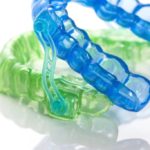
The main symptom of sleep bruxism is involuntary clenching and grinding of the teeth during sleep. The movements resemble chewing but generally involve more force.
Related Reading
NSF
How to Use a CPAP Machine for Better Sleep
NSF
Nocturia or Frequent Urination at Night
Mouth Exercise Snoring
Mouth And Throat Exercises to Help Stop Snoring and Improve OSA
People with sleep bruxism don’t grind their teeth throughout the night. Instead, they have episodes of clenching and grinding. People may have very few episodes per night or up to 100. The frequency of episodes is often inconsistent, and teeth grinding may not occur every night.
Some amount of mouth movement is normal during sleep. Up to 60% of people make occasional chewing-like motions known as rhythmic masticatory muscle activities (RMMA), but in people with sleep bruxism, these occur with greater frequency and force.
The majority of sleep bruxism takes place early in the sleep cycle during stages 1 and 2 of non-REM sleep. A small percentage of episodes can arise during REM sleep.
It’s normal for people who grind their teeth at night to not be cognizant of this symptom unless they are told about it by a family member or bed partner. However, other symptoms can be an indication of sleep bruxism.
Jaw pain and neck pain are two frequent signs of teeth grinding. These occur because of the tightening of these muscles during episodes of bruxism. Morning headaches that feel like tension headaches are another potential symptom. Unexplained damage to teeth can also be a sign of nighttime clenching and grinding of teeth.





